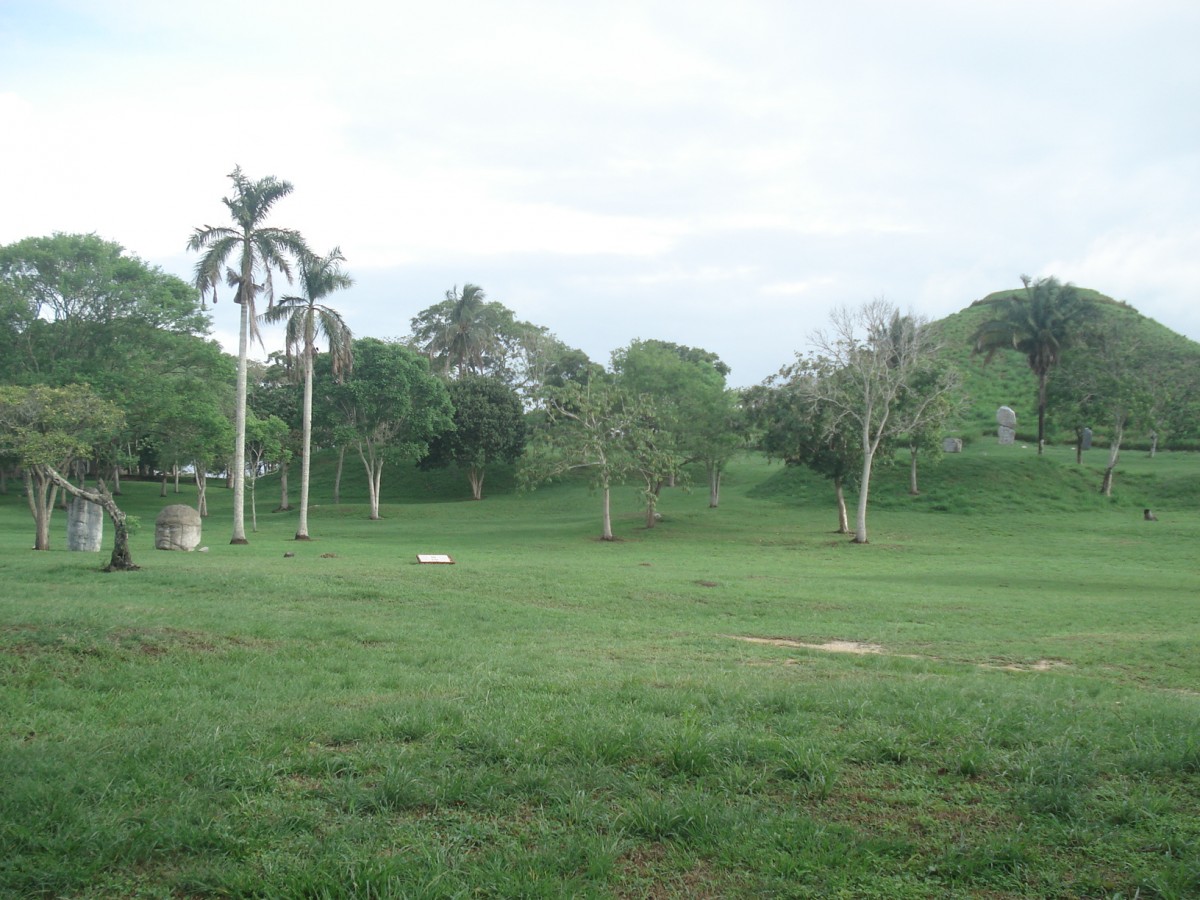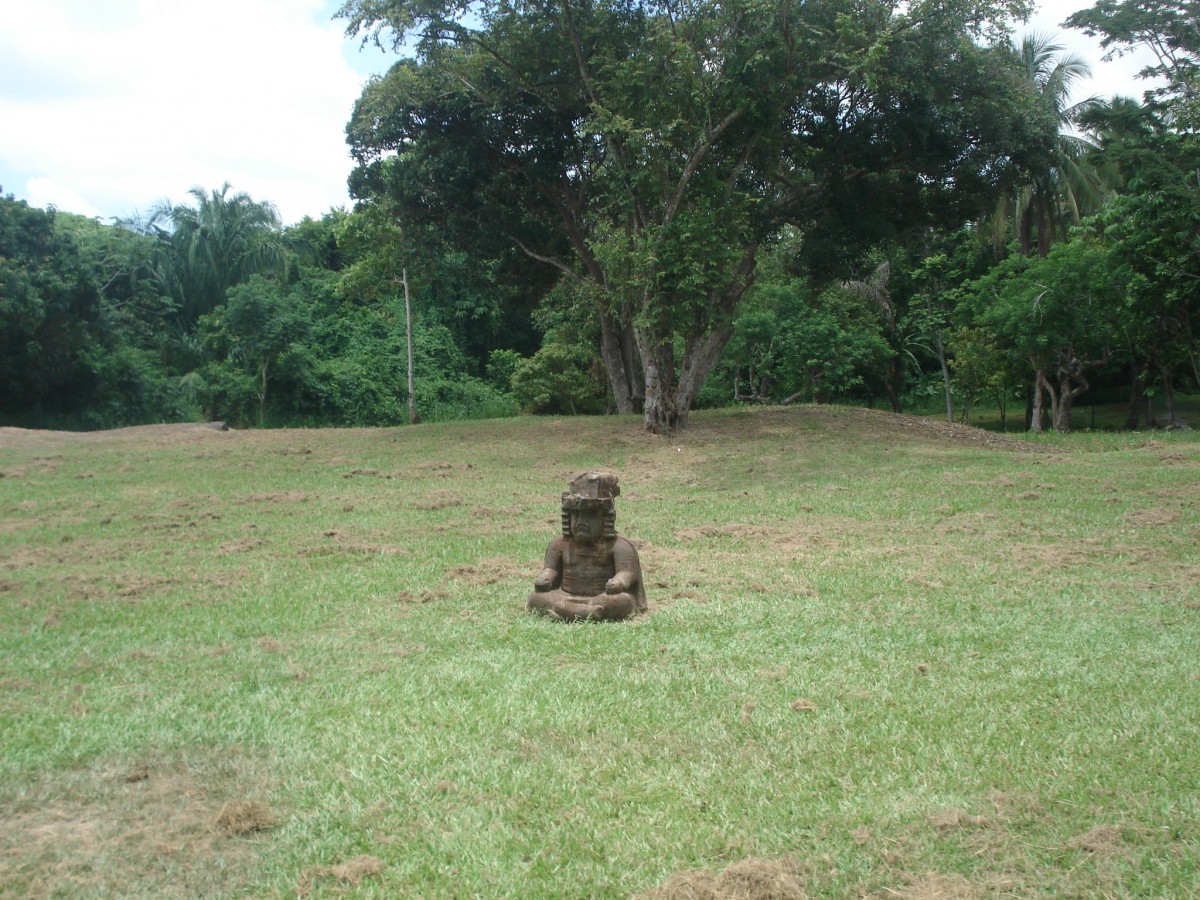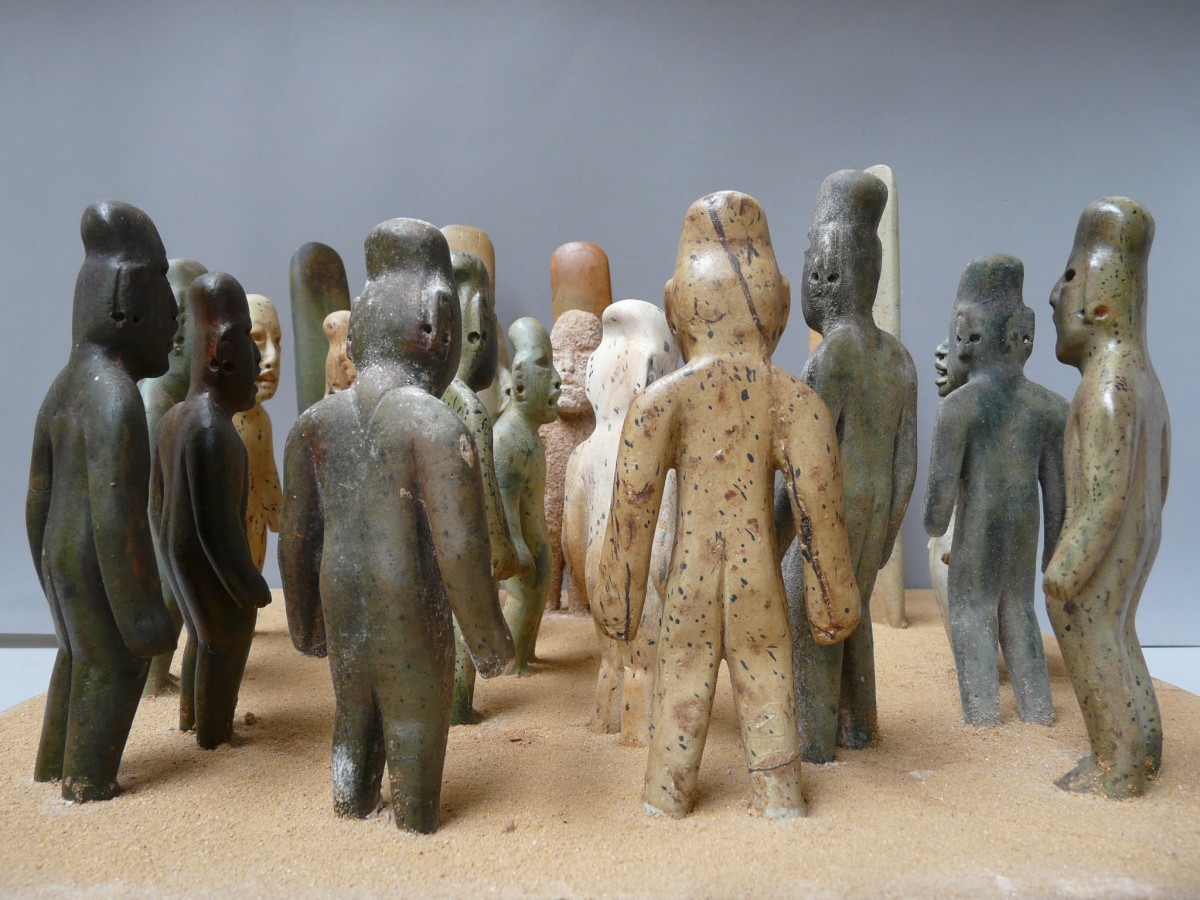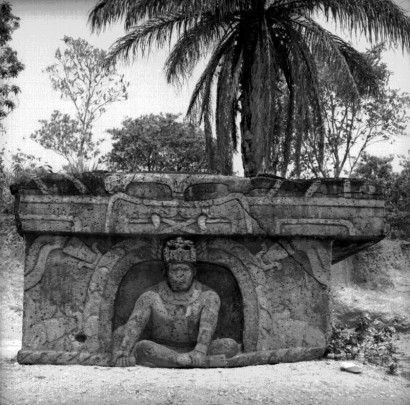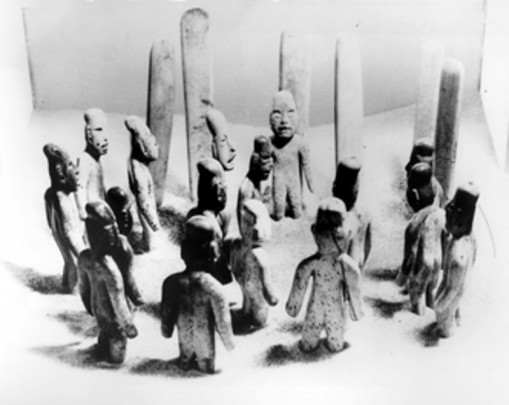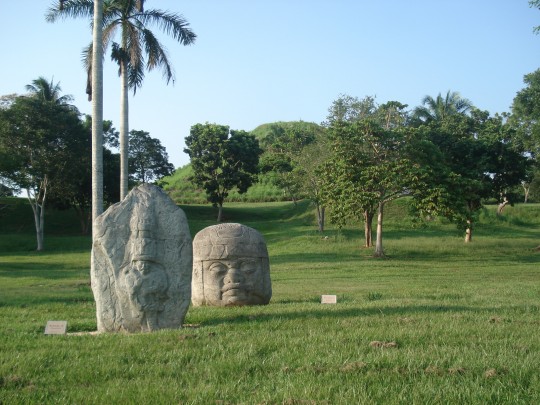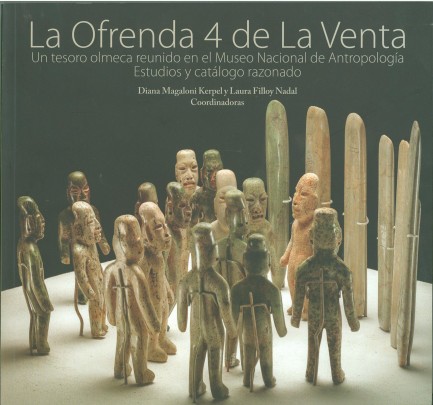La Venta
According to oral tradition, this zone acquired its name because this was where the sale ("venta") of precious woods took place.
One of the first cities of ancient Mexico (1200-400 BC), set in a region of lush vegetation. The imprint of the mysterious Olmecas appears in the urban layout, the amazing stone sculptures—some of them weighing up to 35 tons—and the jade offerings found here.
About the site
La Venta is the oldest known Olmec city in Mesoamerica with a planned layout and a monumental architecture. It is comprised of platforms which are aligned on a north to south axis to form avenues and create open spaces. Settlers possibly first arrived in the region around the year 5,000 BC and 600 years later had already developed a remarkable culture. Large structures were built from compacted earth (stone quarries were far away), with the use of natural tar. These structures reached up to 100 feet in height on broad terraces, with enormous stone sculptures weighing up to 35 tonnes which were brought from the distant Gulf of Mexico area. These were carved with extraordinary skill and replicated the human form or combined it with animal forms to portray fantastical beings. Abundant offerings were also found underground, many of which were made from jade. There are no other comparable examples from this period in ancient Mexico.
A complex society lived here which was probably organized hierarchically, and which carried out intensive farming of corn and yucca (both of these were domesticated by the Olmecs relatively early and they yielded up to three harvests each year). They knew how to exploit the richness of the very humid alluvial soils and the abundant lakes and rivers—Tonalá River and its tributaries—as well as an ecosystem which was rich in edible plants and animals.
It is estimated that the site’s original area around 400 BC covered 500 acres. The city’s most valuable remains are grouped into four complexes. Complex A is the ceremonial enclosure, whose northern courtyard is marked out by a series of basalt columns (the mere fact of bringing them here was a great achievement); its Building A 2 contains a double tomb, made from this type of column, and the remains of two dignitaries, as well as rich offerings of jade, and another large offering of green stones (serpentine), perhaps in honor of Mother Earth. Complex B is a large ceremonial space on a spectacular platform, to the north of which the Stirling Acropolis is found (named in honor of the archeologist Matthew Stirling, who successfully explored the area between 1940 and 1943). Complex C contains the highest pyramidal base (100 feet), the Great Pyramid, in which six magnificent sculptures of fantastical beings were discovered, now in the Site Museum. Complex D consists of more than 20 platforms. Two sculptures which have been described as “altars”, also made with peerless skill, were found in one of them.
In 1955, upon excavation of the northern platform, the archeologist Eduardo Contreras found a substantial offering comprised of 16 figurines of male individuals, all carved from different green stones and framed by a row of axeheads. This discovery, known as Offering 4 of La Venta, commemorates a religious and political event which occurred approximately 1,300 years ago. It is currently exhibited in the National Museum of Anthropology.
A visit to the site is complimented by the Site Museum’s extensive exhibition and explanation of more than 200 original objects made from stone, ceramic or jade, as well as dioramas and miniatures made by expert artisans.
A complex society lived here which was probably organized hierarchically, and which carried out intensive farming of corn and yucca (both of these were domesticated by the Olmecs relatively early and they yielded up to three harvests each year). They knew how to exploit the richness of the very humid alluvial soils and the abundant lakes and rivers—Tonalá River and its tributaries—as well as an ecosystem which was rich in edible plants and animals.
It is estimated that the site’s original area around 400 BC covered 500 acres. The city’s most valuable remains are grouped into four complexes. Complex A is the ceremonial enclosure, whose northern courtyard is marked out by a series of basalt columns (the mere fact of bringing them here was a great achievement); its Building A 2 contains a double tomb, made from this type of column, and the remains of two dignitaries, as well as rich offerings of jade, and another large offering of green stones (serpentine), perhaps in honor of Mother Earth. Complex B is a large ceremonial space on a spectacular platform, to the north of which the Stirling Acropolis is found (named in honor of the archeologist Matthew Stirling, who successfully explored the area between 1940 and 1943). Complex C contains the highest pyramidal base (100 feet), the Great Pyramid, in which six magnificent sculptures of fantastical beings were discovered, now in the Site Museum. Complex D consists of more than 20 platforms. Two sculptures which have been described as “altars”, also made with peerless skill, were found in one of them.
In 1955, upon excavation of the northern platform, the archeologist Eduardo Contreras found a substantial offering comprised of 16 figurines of male individuals, all carved from different green stones and framed by a row of axeheads. This discovery, known as Offering 4 of La Venta, commemorates a religious and political event which occurred approximately 1,300 years ago. It is currently exhibited in the National Museum of Anthropology.
A visit to the site is complimented by the Site Museum’s extensive exhibition and explanation of more than 200 original objects made from stone, ceramic or jade, as well as dioramas and miniatures made by expert artisans.
5000 a.C. - 400 a.C.
Preclásico Temprano a Preclásico Medio
900 a.C. - 400 a.C.
Preclásico Medio
Map
Did you know...
- It contains the oldest pyramid in Mesoamerica.
- Its main plinth, which is 100 feet high, dates approximately from the year 400 BC and is associated with six tombstones engraved in low relief.
- The massive underground offerings were built to the north of this plinth, and are unique in ancient Mexico.
An expert point of view

Rebecca Gonzalez Lauck
Museo Nacional de Antropología
Practical information
Monday to Sunday from 8:00 to 17:00 hrs. The maximum stay is 90 minutes.
$75.00 pesos
Se localiza al noroeste de Tabasco, a 121 km de Villahermosa.
From Coatzacoalcos, take Federal Highway 180 towards Villahermosa; the archeological zone is at km 45.
From Villahermosa, take highway 180 towards Coatzacoalcos; the exit for Villa La Venta is at km 128.
From Villahermosa, take highway 180 towards Coatzacoalcos; the exit for Villa La Venta is at km 128.
-
+52 (993) 3521 030, ext. 358022
-
This email address is being protected from spambots. You need JavaScript enabled to view it.
Directory
Jefe de la Zona Arqueológica
Sisiyi Ruvalcaba Valdez
This email address is being protected from spambots. You need JavaScript enabled to view it.
+52 (923) 232 0423
Investigadora
Rebeca González Lauck
This email address is being protected from spambots. You need JavaScript enabled to view it., This email address is being protected from spambots. You need JavaScript enabled to view it.
+52 (923) 232 0423


